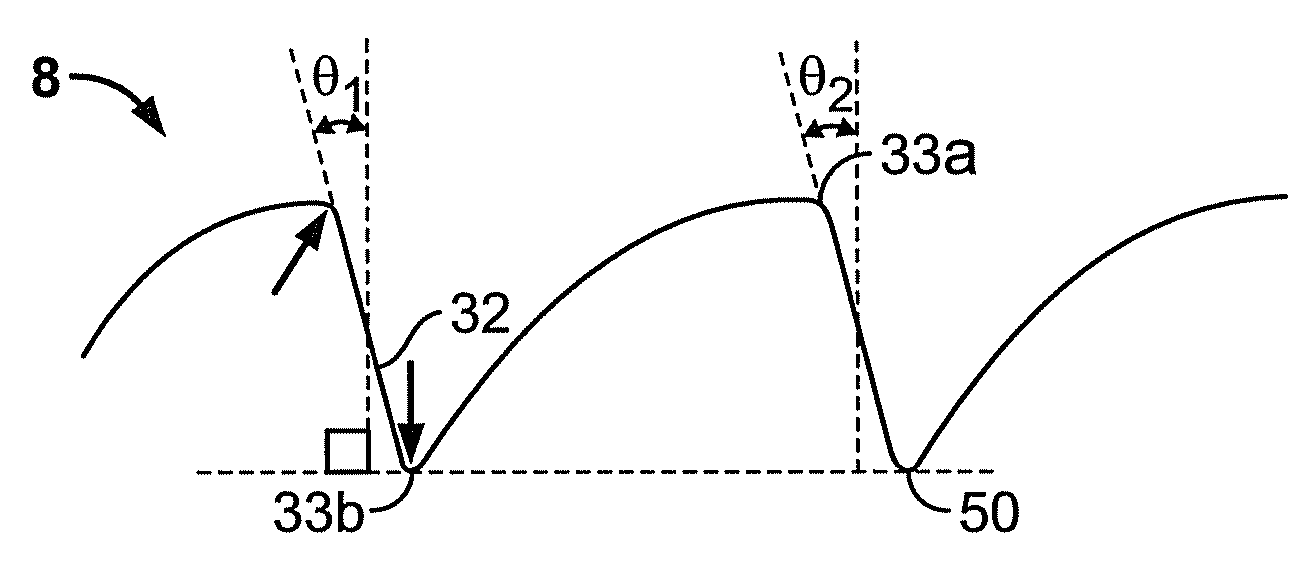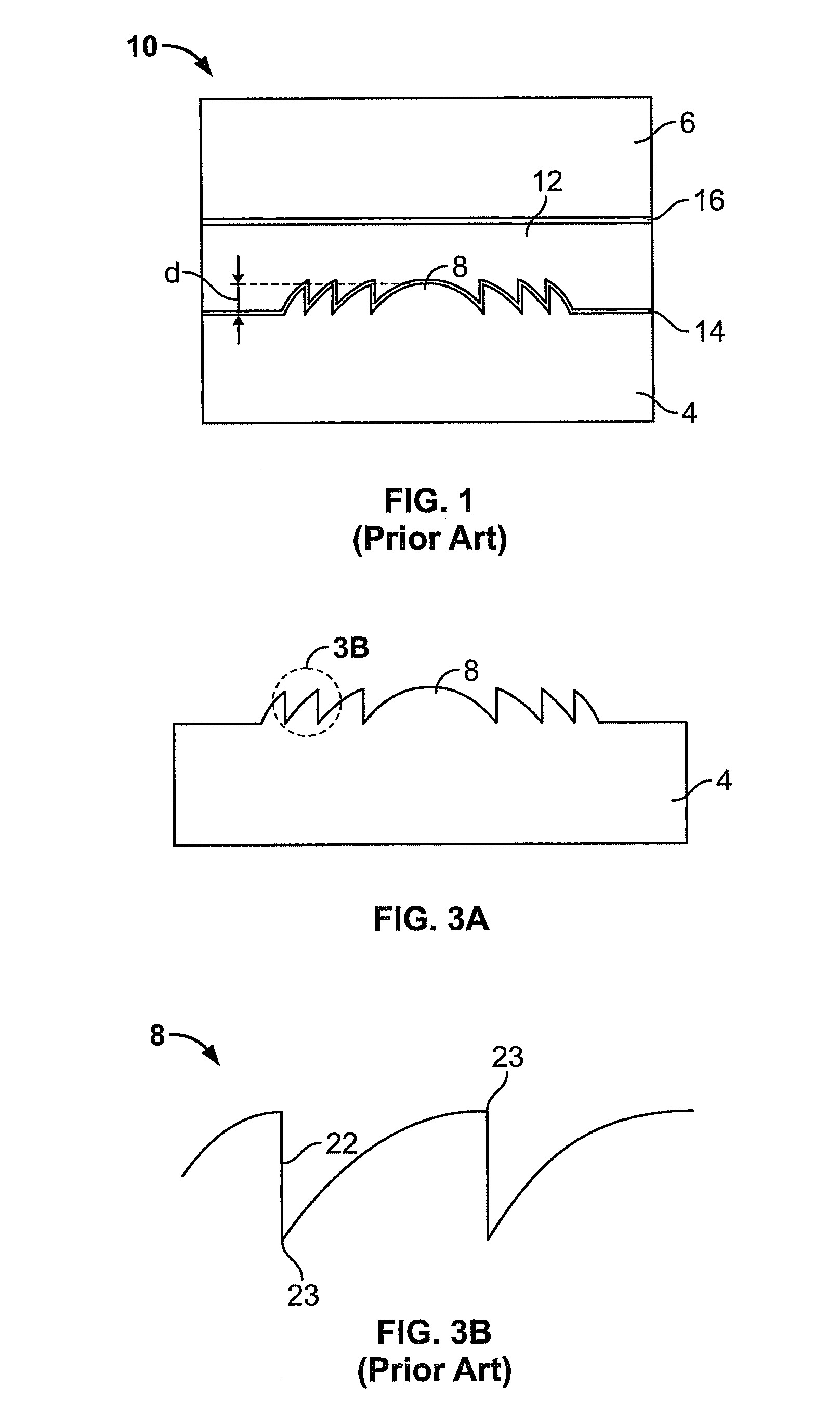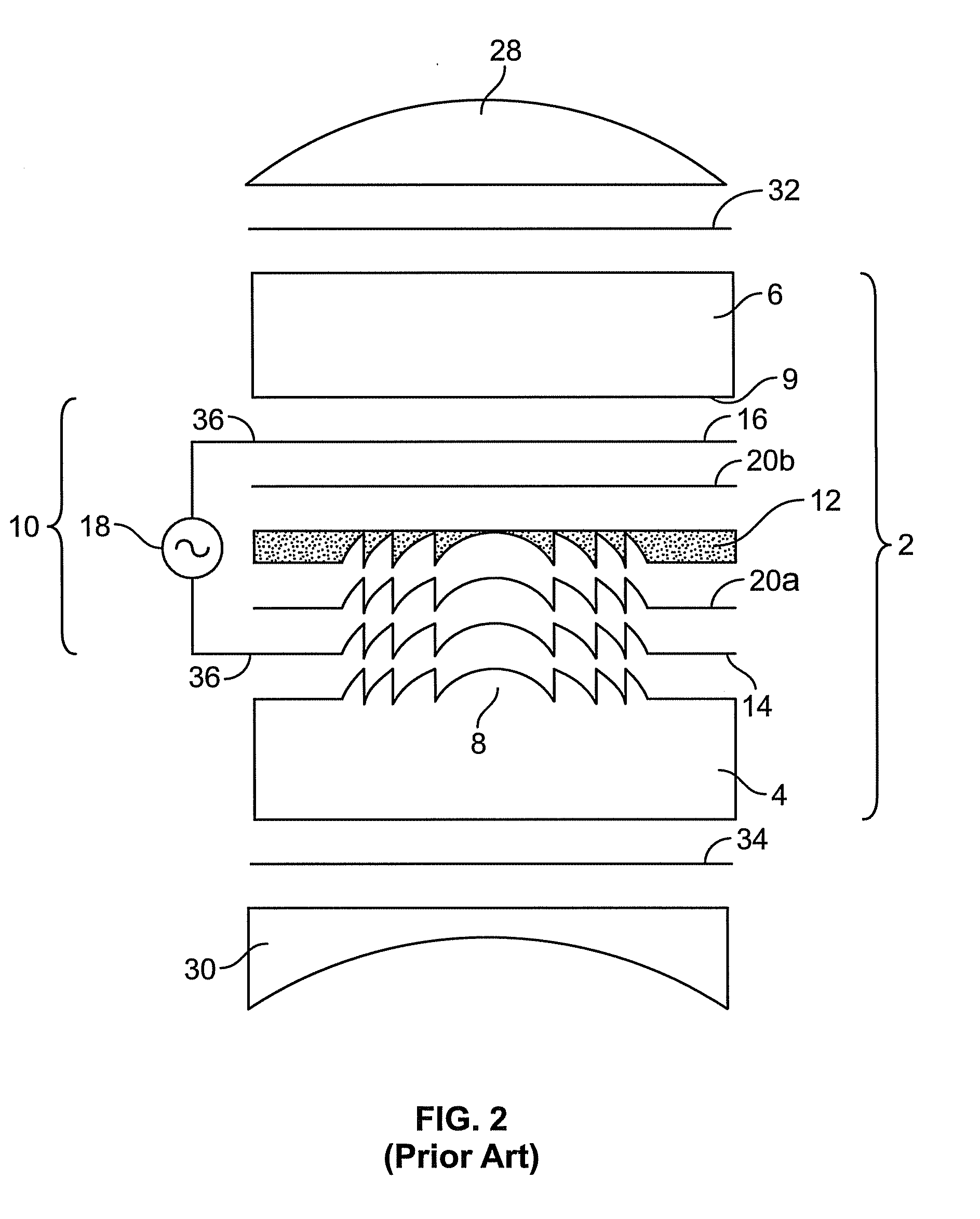Surface relief diffractive optical elements providing reduced optical losses in electro-active lenses comprising liquid crystalline materials
a liquid crystal lens and diffractive topology technology, applied in the field of surface relief diffractive topological profile within an electroactive ophthalmic lens, can solve the problems of non-conventional errors of the eye, canceling out the optical power provided, and higher order aberrations, so as to improve the alignment of cholesteric liquid crystals and reduce optical scatter. , the effect of reducing optical scatter
- Summary
- Abstract
- Description
- Claims
- Application Information
AI Technical Summary
Benefits of technology
Problems solved by technology
Method used
Image
Examples
Embodiment Construction
[0041]The following preferred embodiments as exemplified by the drawings are illustrative of the invention and are not intended to limit the invention as encompassed by the claims of this application.
[0042]FIG. 2 shows a schematic exploded cross section of an electro-active lens 2 as known in the art. The electro-active lens may include a first substrate 4 and a second substrate 6 positioned on opposite sides of the lens. The first substrate 4 may have a surface relief diffractive topological profile 8 for diffracting light. As shown in FIG. 3A and more closely in FIG. 3B, the surface relief diffractive profile 8 possesses nearly vertical side walls 22 and inflection points having sharp, nearly discontinuous changes in the surface profile 23, i.e., sharp corners. Having “discontinuous changes” is to be understood herein mathematically as a point at which the first derivative is essentially infinite. In addition, the surface relief diffractive pattern may be considered to have a dept...
PUM
 Login to View More
Login to View More Abstract
Description
Claims
Application Information
 Login to View More
Login to View More - R&D
- Intellectual Property
- Life Sciences
- Materials
- Tech Scout
- Unparalleled Data Quality
- Higher Quality Content
- 60% Fewer Hallucinations
Browse by: Latest US Patents, China's latest patents, Technical Efficacy Thesaurus, Application Domain, Technology Topic, Popular Technical Reports.
© 2025 PatSnap. All rights reserved.Legal|Privacy policy|Modern Slavery Act Transparency Statement|Sitemap|About US| Contact US: help@patsnap.com



